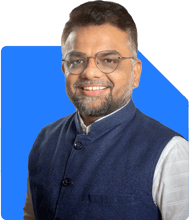Ramalingam Kalirajan |10870 Answers |Ask -Follow
Mutual Funds, Financial Planning Expert - Answered on May 17, 2024
He has an MBA in finance from the University of Madras and is a certified financial planner.
He is the director and chief financial planner at Holistic Investment, a Chennai-based firm that offers financial planning and wealth management advice.... more

I am 28 years old and investing 1k in quant small cap, 1k in quant infrastructure fund and 1k in Aditya Birla PSU fund. It's good for long term like 20 years. Please advise me.
You have chosen a small cap, infrastructure, and PSU fund for your investments. Each fund focuses on different sectors, providing a degree of diversification.
Analysis of Selected Funds
Quant Small Cap Fund: Small cap funds invest in smaller companies with high growth potential but are also highly volatile. They can offer substantial returns over the long term but come with higher risks.
Quant Infrastructure Fund: Infrastructure funds invest in companies involved in the infrastructure sector. These funds can benefit from economic development and government spending but can be sensitive to economic cycles and regulatory changes.
Aditya Birla PSU Fund: PSU funds invest in public sector undertakings (PSUs). These can provide stability and regular dividends but may face slower growth compared to private sector companies.
Diversification and Risk Management
Your current portfolio covers various sectors, but it may still be more concentrated than desired. Balancing investments in small cap, infrastructure, and PSU funds can provide some diversification, yet it may not be enough to reduce overall risk effectively.
Considerations for Long-Term Investment
Risk Tolerance: At 28, you have a long investment horizon, which allows for higher risk tolerance. However, balancing high-risk investments with more stable options is crucial for long-term growth.
Regular Monitoring: Keep an eye on the performance of your funds. Regular reviews can help you make necessary adjustments based on market conditions and fund performance.
Rebalancing: Periodic rebalancing is essential to maintain your desired asset allocation. This ensures that your portfolio remains aligned with your risk tolerance and investment goals.
Potential Modifications
Add Diversification: Consider adding funds that cover large-cap and mid-cap stocks for better diversification. This can reduce the overall volatility of your portfolio.
Sector Balance: While sector-specific funds can provide growth, adding more balanced equity funds or diversified mutual funds can help spread risk.
Benefits of Actively Managed Funds
Actively managed funds provide professional management and the potential to outperform the market. They offer flexibility in adjusting to market conditions, which can be beneficial for long-term growth.
Regular vs. Direct Funds
Direct funds have lower expense ratios but require more effort in fund selection and monitoring. Regular funds through a Mutual Fund Distributor (MFD) with a Certified Financial Planner (CFP) can provide valuable guidance and professional management, balancing risks and returns effectively.
Recommendations
Add Large-Cap or Multi-Cap Funds: Consider adding a large-cap or multi-cap fund to your portfolio. These funds provide stability and steady growth.
Consult a CFP: For tailored advice, consult a Certified Financial Planner (CFP). They can help you optimize your investment strategy based on your goals and risk tolerance.
Long-Term Perspective: Keep a long-term perspective and avoid frequent changes based on short-term market fluctuations. Consistent investing and patience are key to achieving long-term financial goals.
Conclusion
Your current investments in small cap, infrastructure, and PSU funds are a good start. Adding more diversified funds and consulting with a CFP can help you achieve a balanced and robust portfolio for long-term growth.
Best Regards,
K. Ramalingam, MBA, CFP,
Chief Financial Planner,
www.holisticinvestment.in
You may like to see similar questions and answers below
Vivek Shah | Answer |Ask -Follow
Financial Planner - Answered on Apr 19, 2024
Ramalingam Kalirajan |10870 Answers |Ask -Follow
Mutual Funds, Financial Planning Expert - Answered on May 15, 2024
Ramalingam Kalirajan |10870 Answers |Ask -Follow
Mutual Funds, Financial Planning Expert - Answered on Jul 24, 2024
Milind Vadjikar | Answer |Ask -Follow
Insurance, Stocks, MF, PF Expert - Answered on Nov 20, 2024
Dr Dipankar Dutta |1837 Answers |Ask -Follow
Tech Careers and Skill Development Expert - Answered on Dec 05, 2025
Dr Shyam Jamalabad |108 Answers |Ask -Follow
Dentist - Answered on Dec 05, 2025
Dr Shyam Jamalabad |108 Answers |Ask -Follow
Dentist - Answered on Dec 05, 2025
Dr Shyam Jamalabad |108 Answers |Ask -Follow
Dentist - Answered on Dec 05, 2025
Dr Dipankar Dutta |1837 Answers |Ask -Follow
Tech Careers and Skill Development Expert - Answered on Dec 05, 2025
Ulhas Joshi |280 Answers |Ask -Follow
Mutual Fund Expert - Answered on Dec 05, 2025
Dr Dipankar Dutta |1837 Answers |Ask -Follow
Tech Careers and Skill Development Expert - Answered on Dec 04, 2025
Ravi Mittal |676 Answers |Ask -Follow
Dating, Relationships Expert - Answered on Dec 04, 2025
Anu Krishna |1745 Answers |Ask -Follow
Relationships Expert, Mind Coach - Answered on Dec 04, 2025
Anu Krishna |1745 Answers |Ask -Follow
Relationships Expert, Mind Coach - Answered on Dec 04, 2025





























